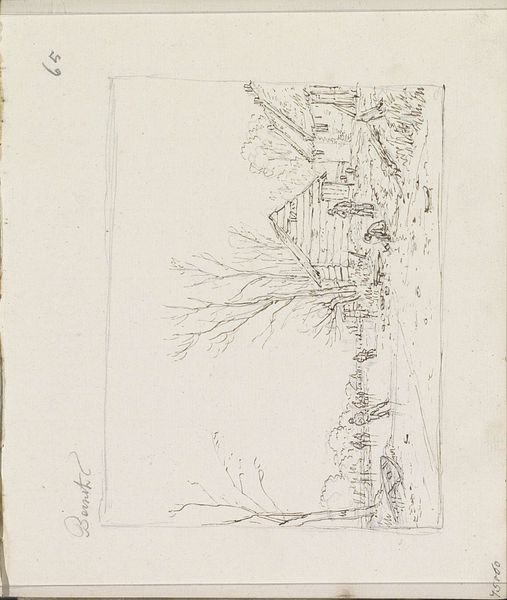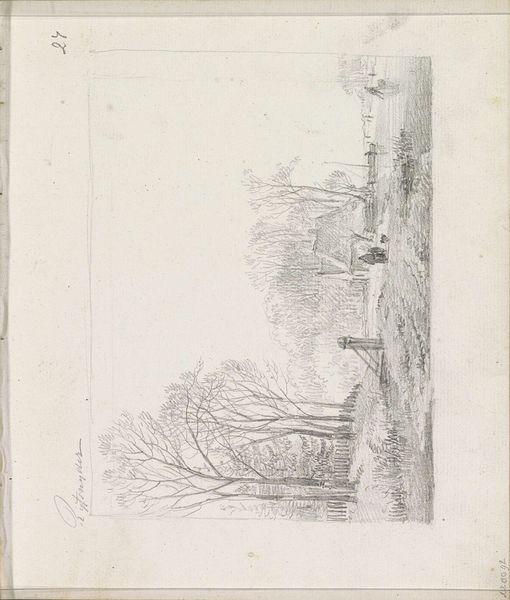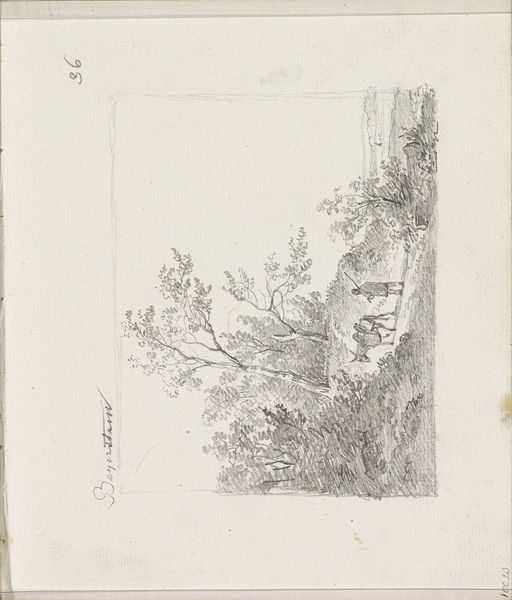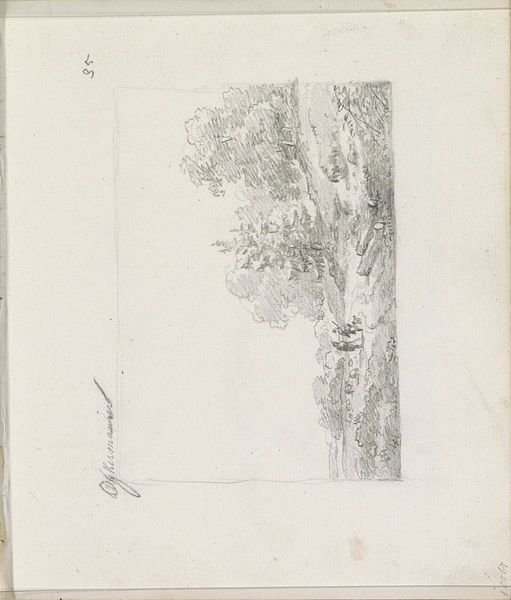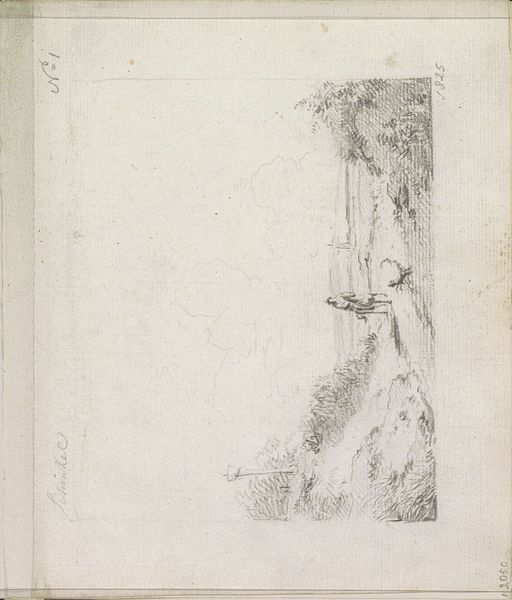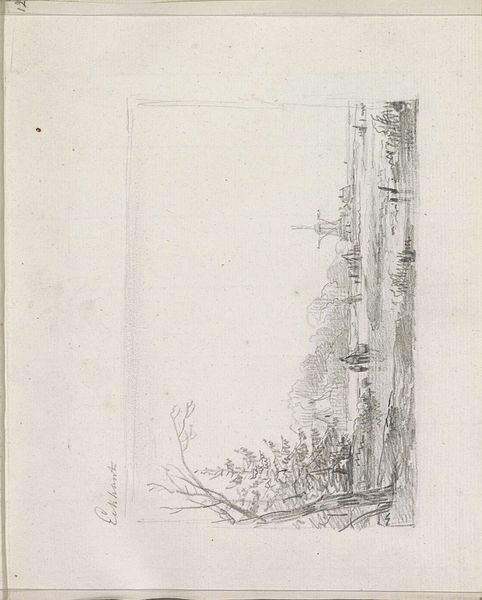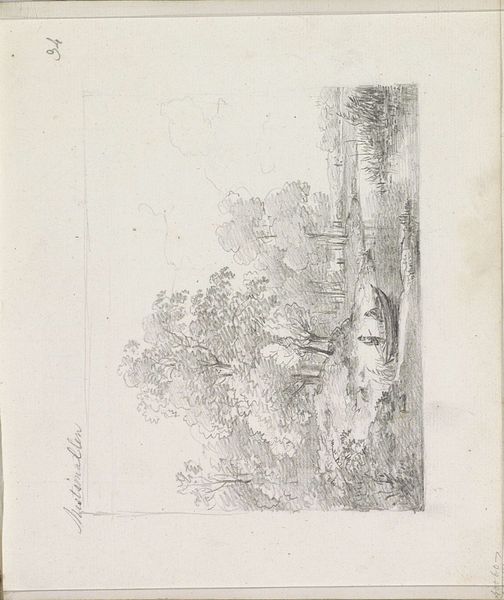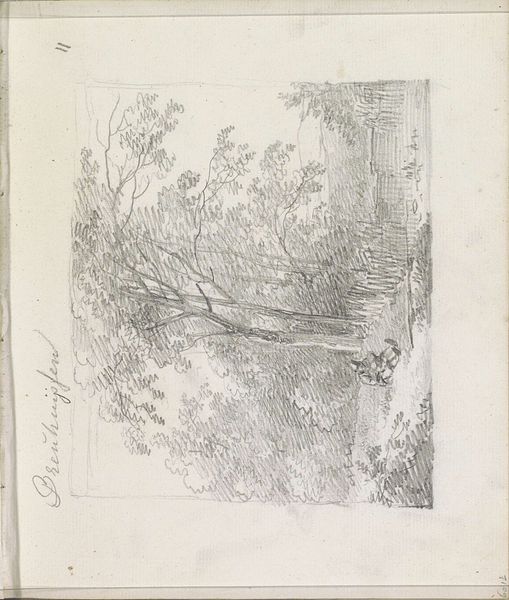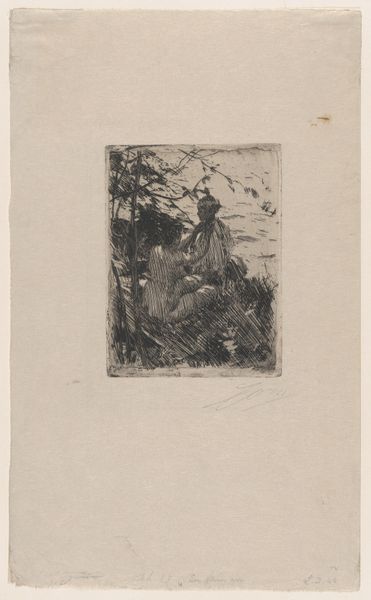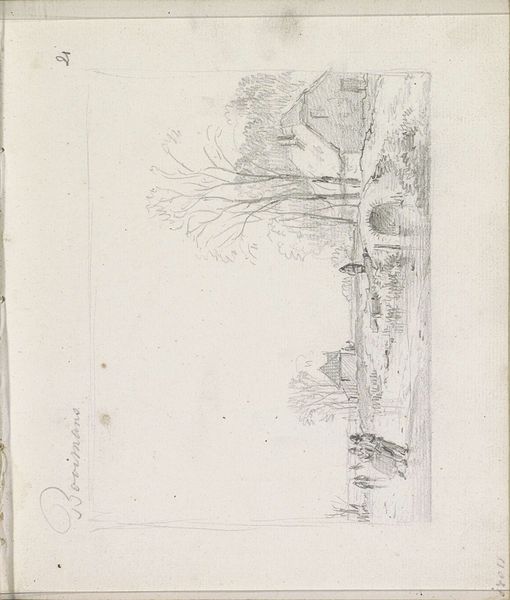
drawing, pencil
#
drawing
#
amateur sketch
#
light pencil work
#
pencil sketch
#
incomplete sketchy
#
landscape
#
personal sketchbook
#
sketchwork
#
ink drawing experimentation
#
romanticism
#
pencil
#
sketchbook drawing
#
sketchbook art
#
initial sketch
Copyright: Rijks Museum: Open Domain
Curator: Here we have Andreas Schelfhout's pencil drawing, "Figures by a Hut on a Waterfront," likely created sometime between 1825 and 1829. It's a charming, unassuming piece currently residing here at the Rijksmuseum. Editor: There's something about the fragility of it that really grabs me. It’s so tentative, like a half-remembered dream. Is it unfinished, or just meant to be this whisper of a scene? Curator: That sense of incompletion is key, I think. It invites us to imagine the rest, to collaborate in the creation of the scene. Drawings like this offer such intimate insight into an artist’s process, those initial moments of inspiration and observation. We catch a glimpse of the artistic machinery behind the public works, so to speak. Editor: It's almost voyeuristic, isn't it? Peeking into the artist's sketchbook like this. I feel a certain calmness emanating from it; maybe it's the subdued palette or the quiet figures near the water’s edge, evoking the silence of rural life. Though the perspective is slightly off, no? Curator: The sketch's perspective certainly contributes to its humble style. I find it evocative of the broader context of Romanticism at the time, a fascination with the every-day that in some cases actively critiqued traditional modes of academic artistry. Editor: Right, the romantics! Turning away from the grand historical narratives to focus on the quiet drama of the natural world. The little hut becomes this haven of human presence within the landscape, sketched almost apologetically—a quiet intrusion. Curator: And also a mark of a social order that existed both within and seemingly removed from the larger urban centers where artwork such as this would have circulated. Editor: So well put. It is about position, both literally within the scene and in the society it represents. It leaves you wondering what the figures were looking at. It really puts you in a frame of mind to imagine. Curator: Ultimately, these kinds of sketches are a chance to be on eye-level with art in progress, not merely a finished project.
Comments
No comments
Be the first to comment and join the conversation on the ultimate creative platform.
